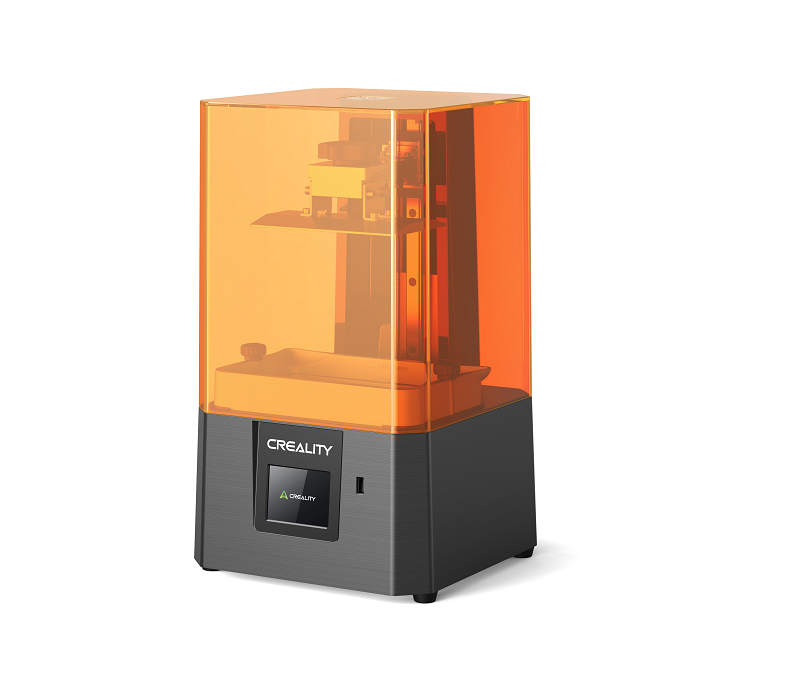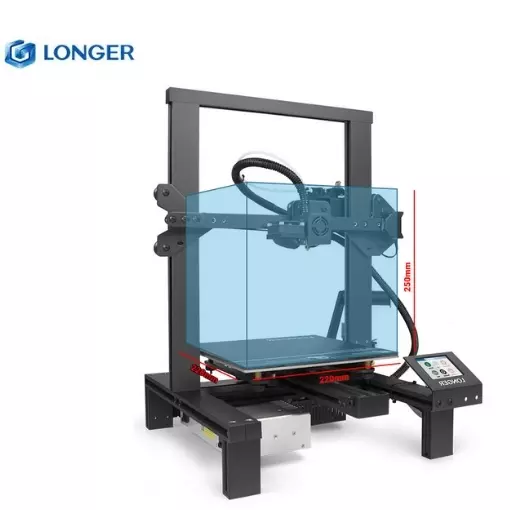Compare Halot R6 vs LK4 X
Comparison between the best 3D printers
Choose the best 3D printer at the best price. The cheapest 3D printers are here.
Buy a 3D printer here with 3D Fila.
 |
 |
|
| Model | Halot R6[BUY Halot R6] |
LK4 X |
| Printing Material | Resin | Filament |
| Buy Resin for Creality Halot R6 | Buy Filament forLonger 3D LK4 X | |
| Estimated price | $129,00 | $299,00 |
| Manufacturer | Creality | Longer 3D |
| Release Year | 2024 | 2022 |
| Print Volume [mm] | 130x82x160 | 220x220x250 |
| Printer Size [mm] | 235x230x395 | 465x485x615 |
| Weight [kg] | 5,8 | 9,8 |
| Power Loss Recovery | NO | YES |
| Maximum Resolution [mm] | 0,01 | 0,1 |
| Processor | 8 bits | |
| Display | Touchscreen 2,8'' | Touchscreen TFT 4,3'' |
| Power Supply | 42W | 12V / 320W |
| Connectivity | USB drive, WiFi | SD / USB |
| Operating systems | Windows, Mac | Windows, Mac, Linux |
| Date of registration in the system | 2024-12-05 | 2021-04-15 |
| Release date | 2024 | 2022 |
| Extra features | The Creality Halot R6 offers high precision with a layer height of 0.01-0.2 mm, a printing speed of 60 mm/h, and an integral light source with over 90% uniformity. Compact and lightweight, it features a 6.08" monochrome LCD for faster curing and extended durability. Includes Wi-Fi connectivity via Creality Cloud, an intuitive touchscreen interface, and supports remote monitoring and timelapse recording with a USB camera. Ideal for beginners, its robust and user-friendly. | Longer LK4 X offers intelligent 16-point auto-leveling and dual direct-gear extruders for precise filament control, compatible with multiple materials. It features an ultra-quiet 32-bit motherboard and open-source firmware, promoting creative freedom. Its PEI film platform ensures strong adhesion and easy model removal. Includes resume printing functions and filament out-of-stock protection. Assembly is simple, with 95% pre-assembled. It has a 4.3-inch touch screen, dual fan kit, low power consumption, manual belt tensioners and improved Teflon tube. |
| Support for multiple colors and materials (AMS and CFS) | NO | NO |
Notes * |
||
| Cost-benefit | 9 / 10 | 7 / 10 |
| Hardware | 9 / 10 | 2.8 / 10 |
| Tela | . | . |
| Print volume | 3 / 10 | 3 / 10 |
| Performance | 9 / 10 | 1 / 10 |
| [BUY Halot R6] |
Conclusion |
| In comparing the Halot R6 and the LK4 X 3D printers, several key factors emerge that can guide potential buyers in making an informed decision. **Cost and Value:** The Halot R6 is priced significantly lower than the LK4 X, providing excellent value considering its features and performance. The cost-benefit rating highlights this disparity, with the Halot R6 scoring higher due to its affordability and performance metrics. **Printing Capabilities:** The Halot R6 excels in precision, offering a maximum resolution of 0.01 mm, making it ideal for projects requiring high detail. In contrast, the LK4 X, while equipped with useful features such as intelligent auto-leveling and dual extruders, has a lower resolution that may limit fine detailing in prints. **Print Volume and Size:** The LK4 X offers a larger print volume, suitable for bulkier projects, while the Halot R6 is more compact and lightweight, catering to individuals with limited space. However, if precision and detail are paramount, the Halot R6’s smaller build may be a worthwhile compromise. **Extra Features:** The LK4 X stands out with its advanced features, such as power loss recovery and an intuitive firmware, enhancing user experience and reliability during long prints. While the Halot R6 lacks some of these features, it compensates with modern connectivity options like Wi-Fi and enhanced user interface. **Hardware and Performance:** The Halot R6 scores significantly better in hardware and overall performance, indicating a more robust and efficient printing experience. The LK4 X, though equipped with modern technology and user-friendly attributes, falls behind in performance metrics. **Final Recommendation:** In summary, if you are a beginner or someone who values detail and affordability without compromising quality, the Halot R6 is the superior choice. On the other hand, if you require a larger print volume and features that cater to more complex projects, the LK4 X may be considered despite its higher cost and lower performance in precision. Ultimately, the decision will depend on the user's specific needs and budget preferences. |

